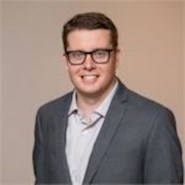 Julie A. Galbraith
Julie A. Galbraith Civil engineering progress can take a lot of forms. But there’s no substitute for the lessons learned from field work in the aftermath of a disaster.
“That knowledge gained is unbelievable,” said Omar A. Jaradat, Ph.D., P.E., D.PE, M.ASCE, technical director for the structural team in Moffatt & Nichol’s Long Beach, California, office, and a leader in seismic research and design of port structures.
“You don’t learn these things in school. You don’t learn about them through design projects. You have to go nature’s laboratory.”
This week, Jaradat is leading an ASCE Coasts, Oceans, Ports and Rivers Institute field investigation team in Turkey to study the effects of the Feb. 6 7.8-magnitude earthquake and aftershocks.
 Marc Percher
Marc Percher The team arrived Sunday, May 7, and will conduct post-earthquake field inspections with local Turkish engineering researchers at more than 20 sites along 100 miles of affected waterfronts – including a container port, marine oil terminals, and fishing, ferry, cargo, and public facilities – through Friday, May 12. The ASCE team will also meet with researchers at the Middle East Technical University to establish a data-sharing relationship.
Ten years ago, several members of this ASCE team were instrumental in developing ASCE 61, the first standard to establish guidelines for the seismic design of piers and wharves. Their work with an ASCE reconnaissance team following the 2010 Chile earthquake proved essential to that standard, and Jaradat hopes this week’s trip will help further that work.
“One of the major things we’re looking at is how to address aftershocks in codes and standards,” Jaradat said. “One of the unique things about this earthquake in Turkey is that it had a lot of aftershocks – multiple earthquakes in the same week, sometimes in the same day.
“Current design codes in the United States don’t address earthquake aftershock design. They just design for one major design earthquake for buildings. For marine structures, in ASCE 61 we designed for three different earthquakes with different performance requirements.”
 Julie A. Galbraith
Julie A. Galbraith The reconnaissance team in Turkey features eight engineers, including members of COPRI, the Structural Engineering Institute, and the Geo-Institute. Jaradat, the team lead, is joined by Carlos Ospina, Ph.D., P.E., P.Eng, M.ASCE; Turel Gur, Ph.D., P.E., M.ASCE; Marc Percher, P.E., M.ASCE; Amin Rahmani, Ph.D., P.E., M.ASCE; Julie Galbraith, P.E., M.ASCE; Theresa Richards, P.E., S.M.ASCE; and Dolunay Oniz, E.I.T., A.M.ASCE.
It’s a team with diverse experiences, areas of expertise, and ages. Half the team is under 40. Jaradat looks forward to the opportunity to pay forward the mentorship he received as a young engineer working on developing seismic design codes for marine structures.
“We have a great mix. Everyone is carrying their weight, and they want to learn, and they want to deliver,” Jaradat said. “Each one of them has an assignment to their strength.
“We’re in the middle of a very busy period of engineering. There aren’t enough engineers in the market, so there’s too much work. So for people to take the effort to make this trip happen, that’s not something you can find easily – people like this. It’s an amazing team. We have a lot of energy.
“We’re eager to go there and make it a success.”
Keep up with the Civil Engineering Source this week as the team contributes regular updates from Turkey.
The team’s travel expenses are supported by the ASCE Foundation Disaster Response Fund. Gifts to the Disaster Response Fund help support this and future post-disaster assessment teams.



